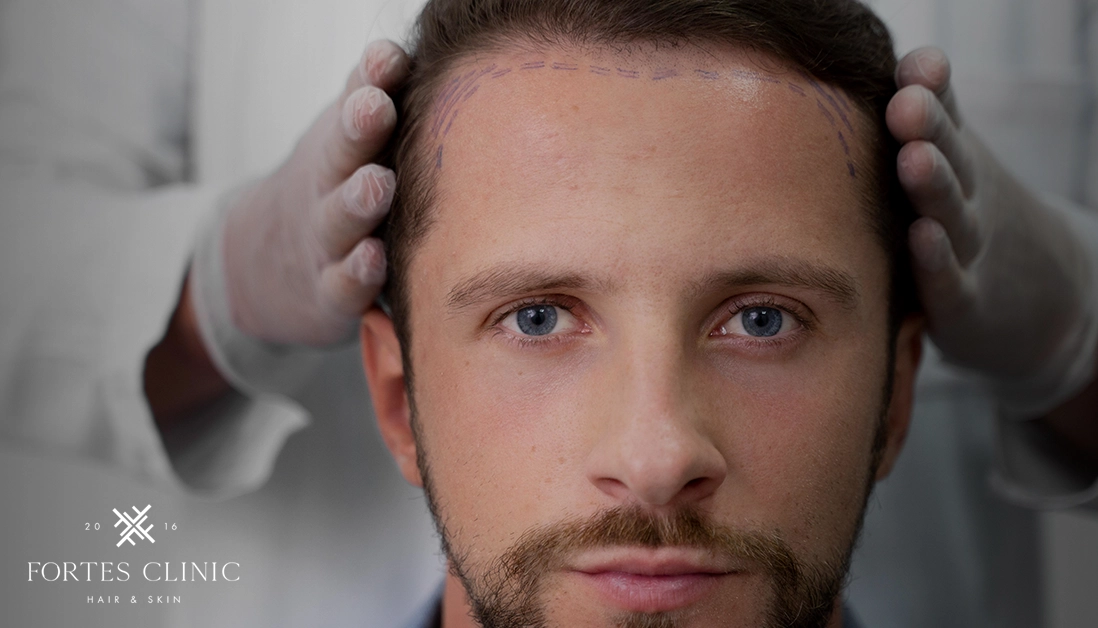How Long Does A Hair Transplant Last: An Introduction
Hair loss is a common concern affecting millions worldwide, often leading to a significant impact on self-esteem and quality of life. In the quest for a permanent solution, hair transplants have emerged as a popular and effective treatment. But one critical question lingers in the minds of many considering this procedure: “How long does a hair transplant last?” This comprehensive guide delves into the intricacies of hair transplants, exploring their longevity, factors influencing success, and realistic expectations for those considering the treatment.
Understanding Hair Transplants
What is a Hair Transplant?
A hair transplant is a surgical procedure that involves moving hair from a dense growth area, known as the donor site, to a bald or thinning area, referred to as the recipient site. The two primary techniques used in hair transplantation are Follicular Unit Extraction (FUE) and Follicular Unit Transplantation (FUT). FUE involves extracting individual hair follicles and transplanting them to the desired area, while FUT entails removing a strip of skin with hair follicles and then grafting it onto the balding area.
Who Needs a Hair Transplant?
Ideal candidates for hair transplants typically include individuals experiencing permanent hair loss due to genetic factors, also known as androgenetic alopecia. However, it’s crucial to understand that factors like age, the pattern of hair loss, and the quality of donor hair play a significant role in determining the suitability of the procedure for each individual.
The Lifespan of a Hair Transplant
Immediate Post-Transplant Phase
In the months following a hair transplant, patients often experience a phenomenon known as ‘shock loss,’ where transplanted hair falls out before entering a new growth phase. This is a normal part of the process, and new hair growth typically begins within 3 to 4 months post-surgery.
Long-Term Results
On average, the results of a hair transplant can last a lifetime. The transplanted hair, taken from areas resistant to balding, maintains its characteristics after transplantation. However, it’s important to note that individual results may vary based on several factors, including lifestyle, age, and the progression of hair loss.
Factors Influencing Hair Transplant Longevity
Understanding what affects the durability of a hair transplant is key to setting realistic expectations and achieving long-lasting results. Several factors play a critical role in this regard.
Quality of Donor Hair
The longevity of a hair transplant largely hinges on the quality of the donor hair. Donor hair is typically taken from the back or sides of the scalp, areas generally resistant to the hormone dihydrotestosterone (DHT), which is a primary cause of male pattern baldness. The better the quality and density of the donor hair, the more robust and enduring the transplant results are likely to be.
Technique and Expertise
The technique used for the transplant, along with the surgeon’s skill and experience, significantly influences the outcome’s longevity. FUE and FUT, while both effective, have different advantages and implications for long-term hair health. For instance, FUE may offer quicker recovery times and less scarring, potentially affecting the hair’s growth environment. The precision and care with which the procedure is performed also contribute to the overall success and duration of the transplant.
Post-Transplant Care
Post-operative care is essential in preserving the results of a hair transplant. Following the surgeon’s advice on hair care, medication, and lifestyle choices post-surgery can significantly impact the health and longevity of transplanted hair. Avoiding harsh chemicals, refraining from smoking, and minimising exposure to direct sunlight are just a few of the steps that can help maintain the transplanted hair.
Realistic Expectations and Potential Complications
It is crucial for patients to have realistic expectations about the results of a hair transplant and to understand the potential complications that may arise.
Setting Realistic Goals
A hair transplant can significantly improve one’s appearance, but it’s important to have realistic expectations. The results depend on several factors, including the extent of hair loss, hair characteristics, and overall health. It is essential to have a thorough consultation with the surgeon to understand what can realistically be achieved.
Possible Complications and Risks
Like any surgical procedure, hair transplants come with potential risks and complications. These may include infection, bleeding, scarring, and uneven hair growth. In rare cases, the transplanted hair might not ‘take’ or look natural. Selecting a reputable and experienced surgeon and clinic can minimise these risks.
Comparing Hair Transplant to Other Hair Loss Treatments
While hair transplants offer a permanent solution for hair loss, it’s important to compare them with other available treatments to understand their relative advantages and limitations.
Hair Transplants vs. Medication
Hair loss medications like Minoxidil and Finasteride are commonly prescribed for hair loss. These treatments are less invasive than a hair transplant and can be effective in slowing down hair loss and, in some cases, stimulating regrowth. However, their effects are usually temporary; hair loss often resumes once the medication is stopped. In contrast, a hair transplant provides a more lasting solution, as the transplanted hair is generally resistant to the hormonal effects that cause balding.
Alternative Therapies and Innovations
In addition to medication, other therapies like Low-Level Laser Therapy (LLLT), Platelet-Rich Plasma (PRP) injections, and scalp micropigmentation offer alternative approaches to managing hair loss. These treatments vary in effectiveness and are often used as complementary therapies rather than standalone solutions. As medical technology advances, new treatments and innovations continue to emerge, offering hope for even better solutions in the future.
Choosing Fortes Clinic for Your Hair Transplant Journey
When it comes to undergoing a hair transplant, selecting the right clinic and surgeon is paramount. Fortes Clinic stands out as a premier choice for several compelling reasons.
Expertise and Experience
At Fortes Clinic, we pride ourselves on our team of highly skilled and experienced surgeons. Our specialists are not just proficient in the latest hair transplant techniques, but they are also deeply committed to understanding and addressing the unique needs of each patient. With years of successful procedures under their belts, our experts ensure that you receive the best possible care and results.
State-of-the-Art Techniques
We stay at the forefront of hair restoration technology, offering both Follicular Unit Extraction (FUE) and Follicular Unit Transplantation (FUT) procedures. Our clinic is equipped with cutting-edge tools and technology, ensuring precise and effective treatment. This commitment to technology, combined with our surgeons’ expertise, allows us to provide superior results with minimal discomfort and downtime.
Personalised Care and Attention
At Fortes Clinic, we believe that each patient’s journey is unique. From the initial consultation to the post-operative care, our approach is tailored to each individual’s needs and goals. We take the time to understand your concerns, answer your questions, and create a treatment plan that aligns with your expectations and lifestyle.
Proven Track Record of Success
Our clinic’s success is reflected in the satisfaction and results of our patients. We have a vast gallery of before-and-after photos that showcase the transformations achieved through our treatments. These success stories are a testament to our commitment to excellence in hair restoration.



